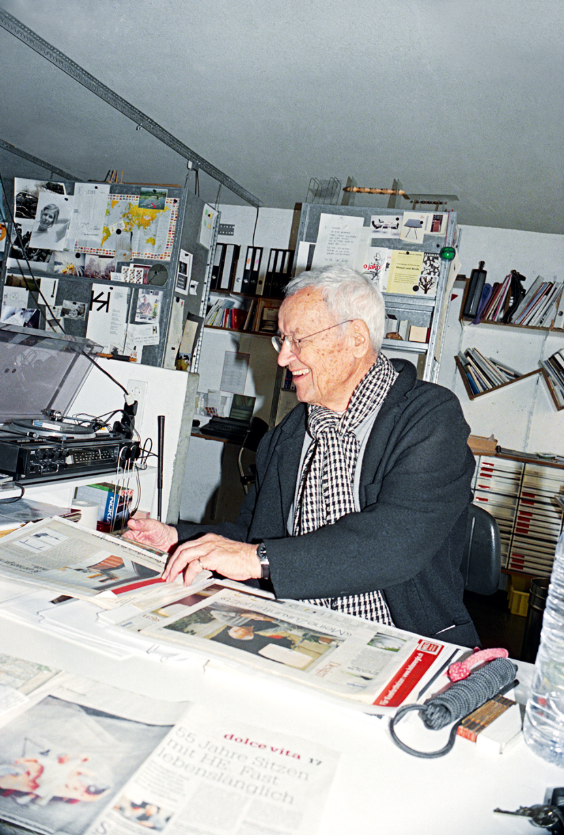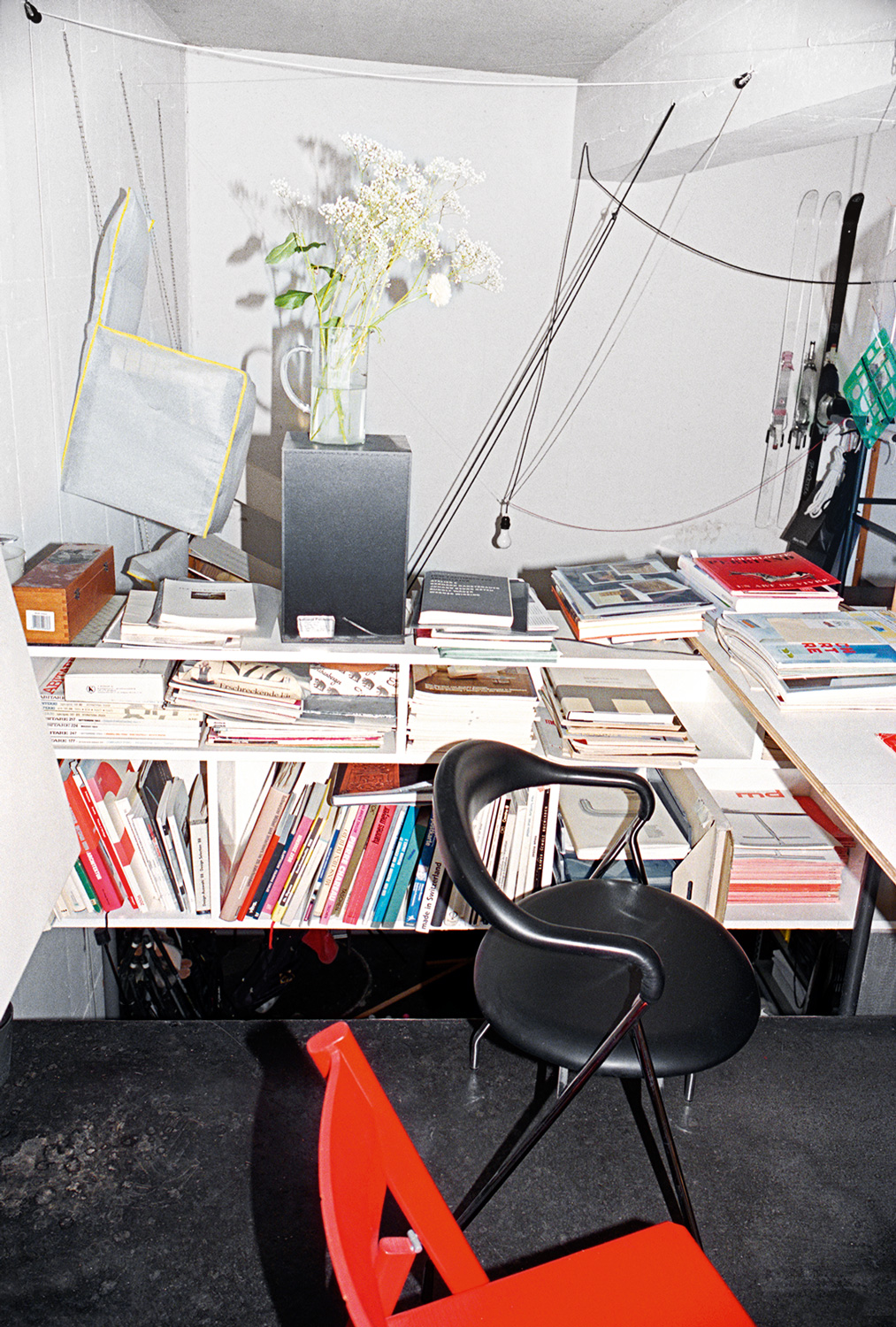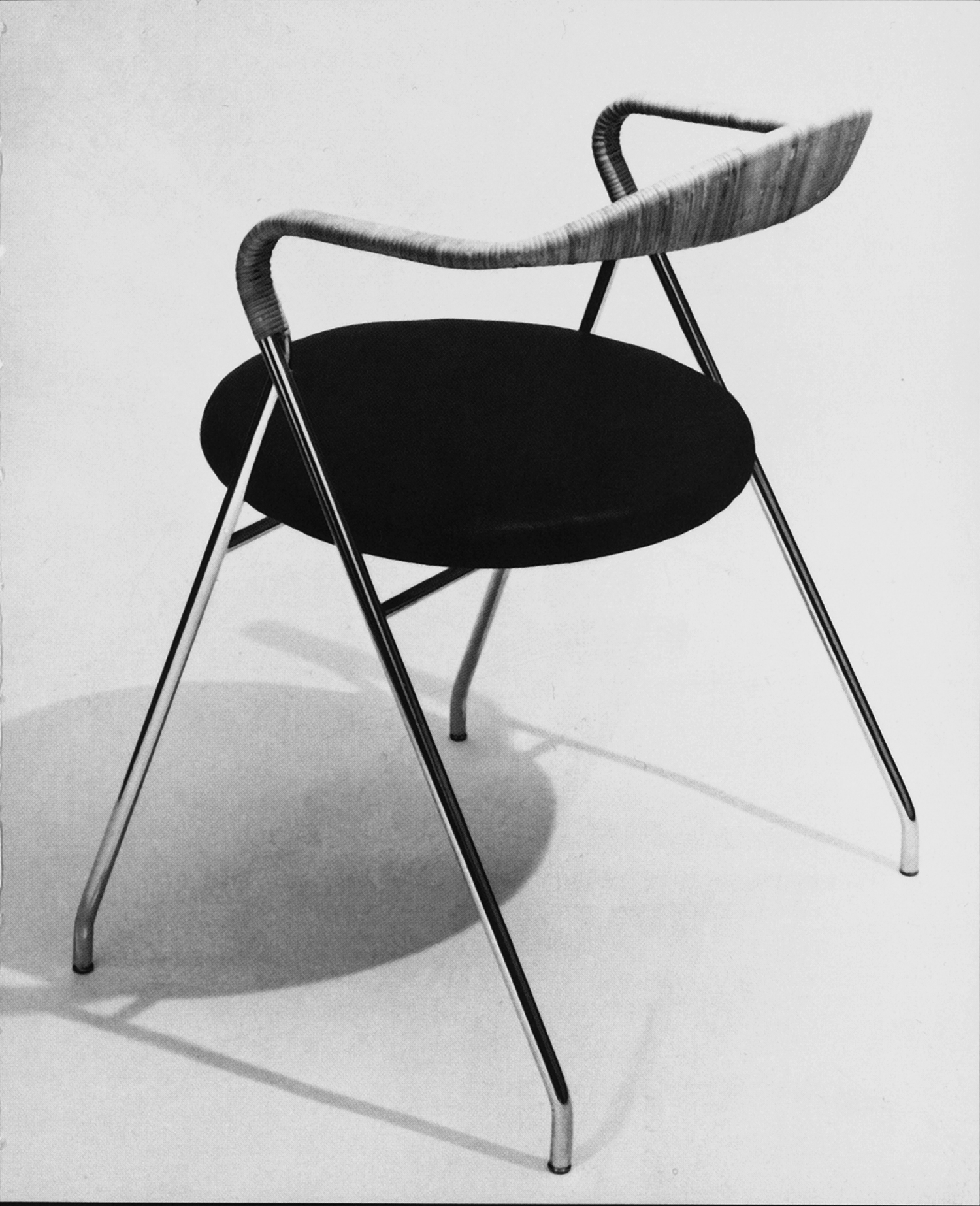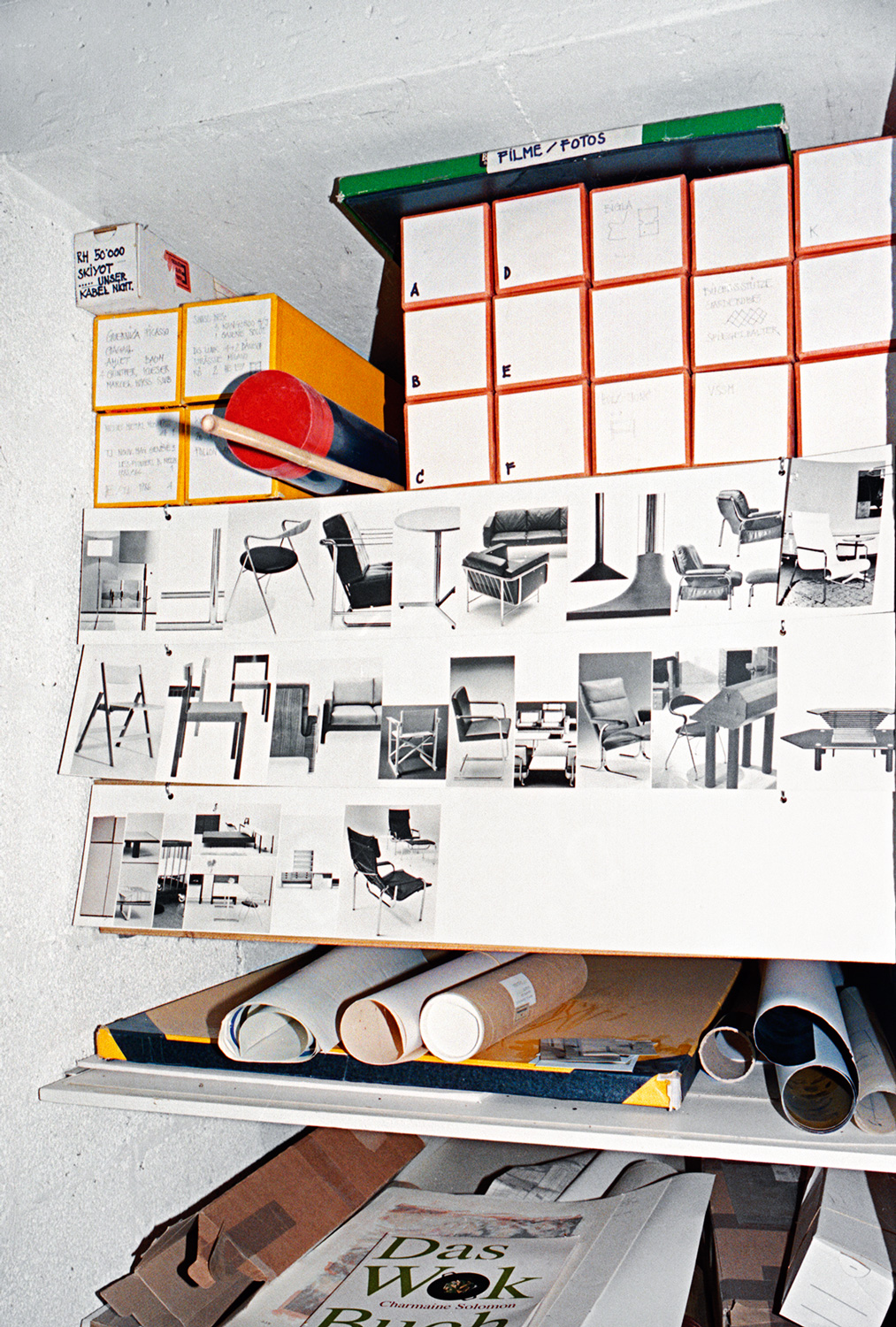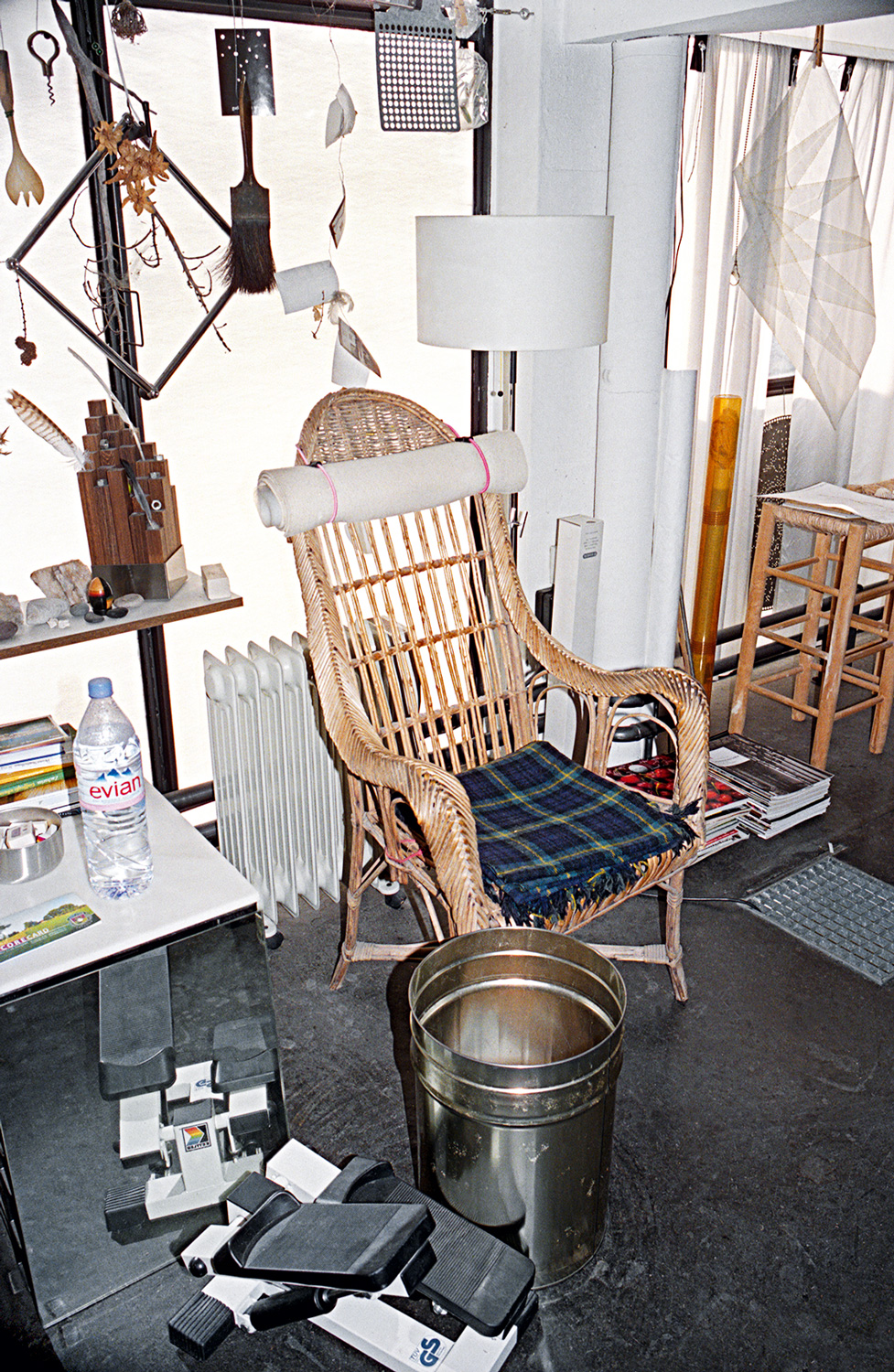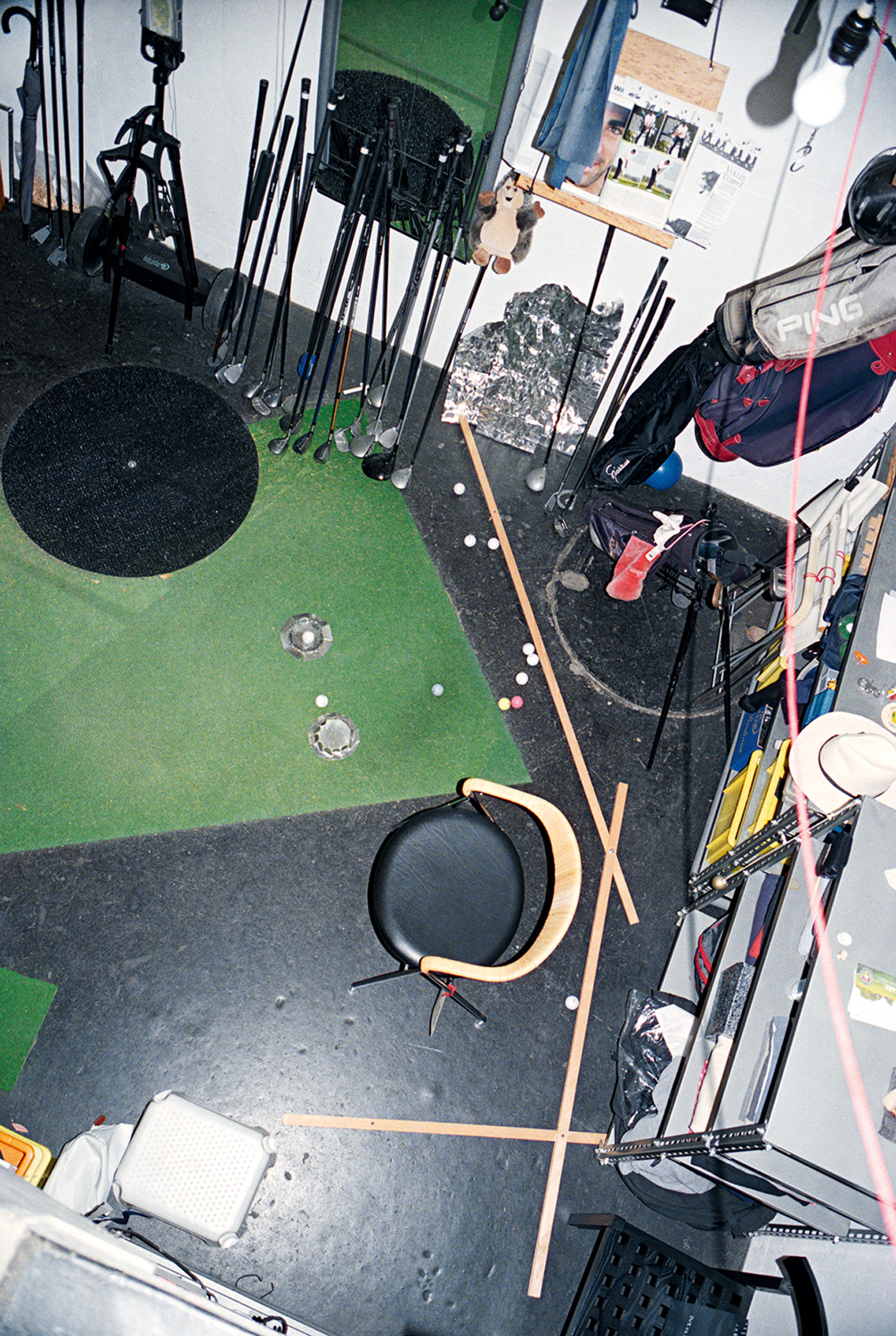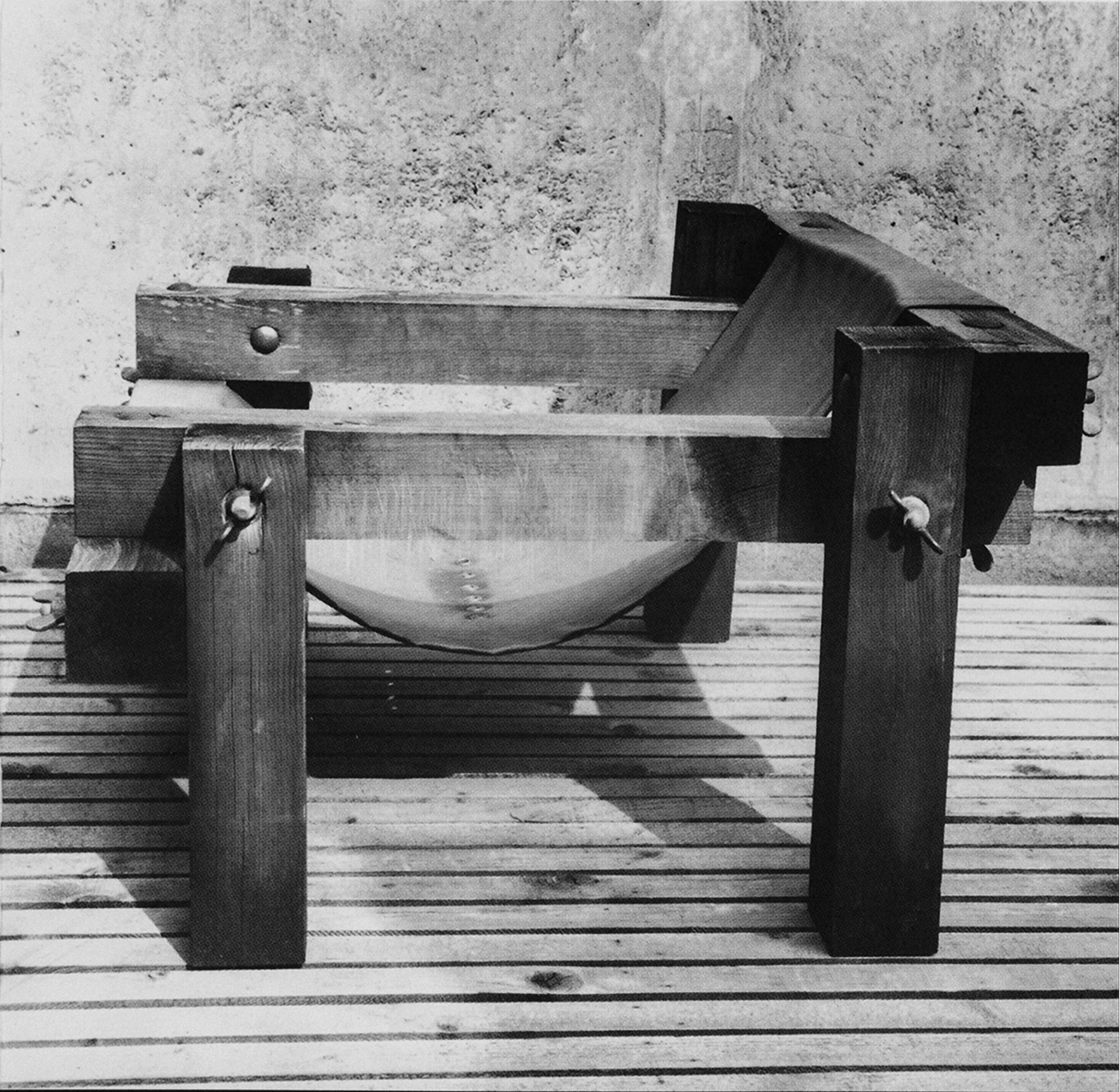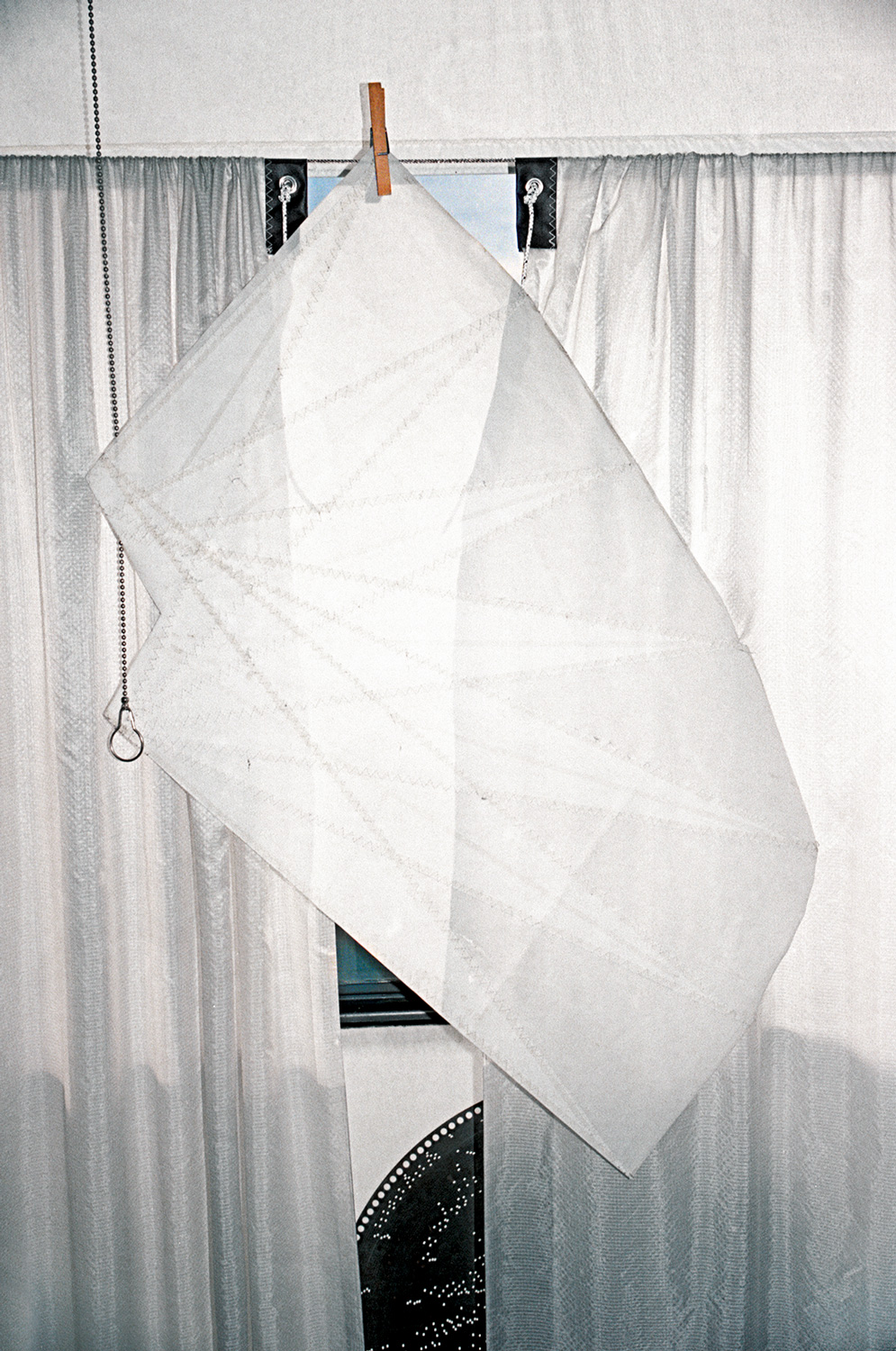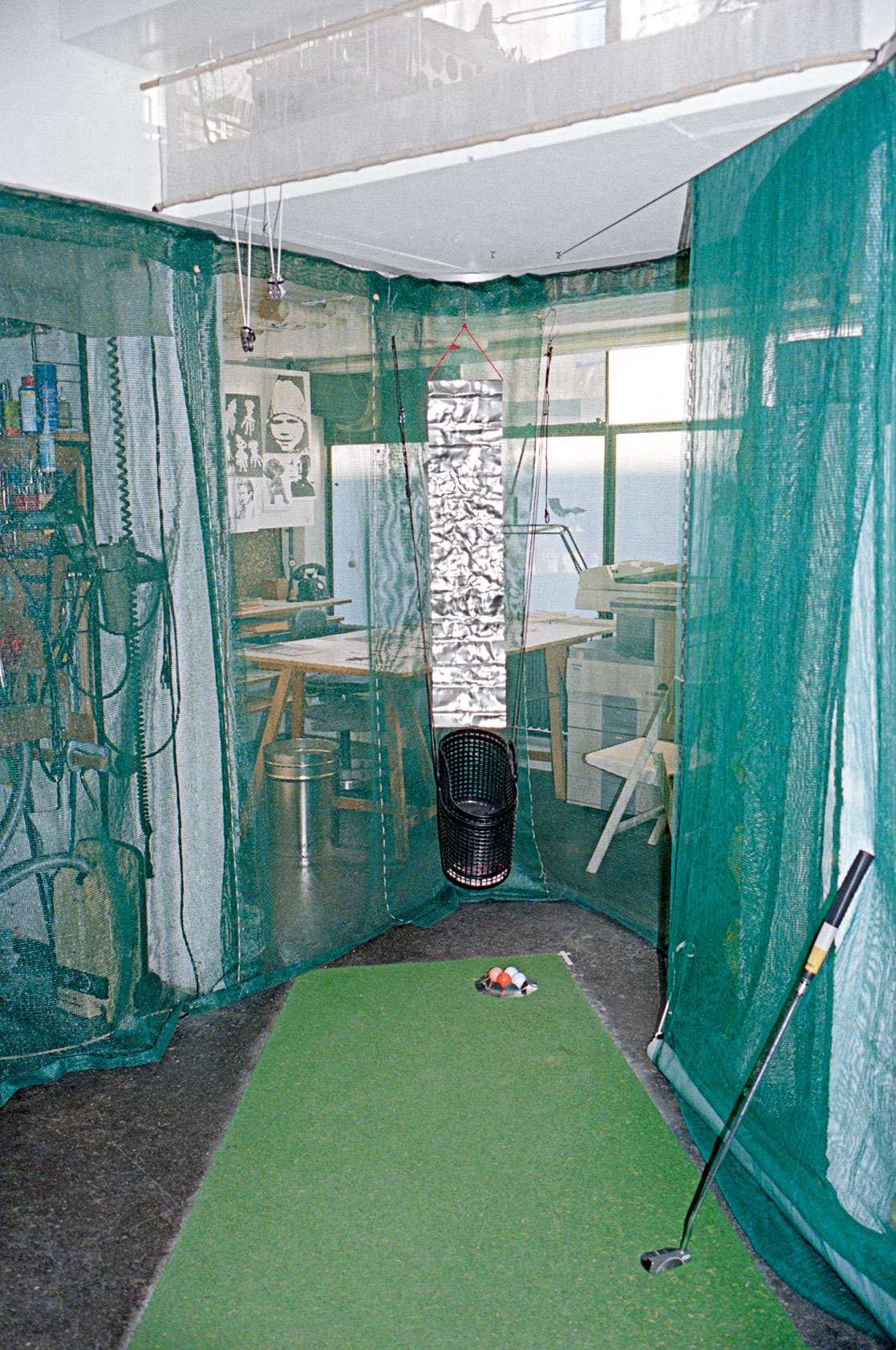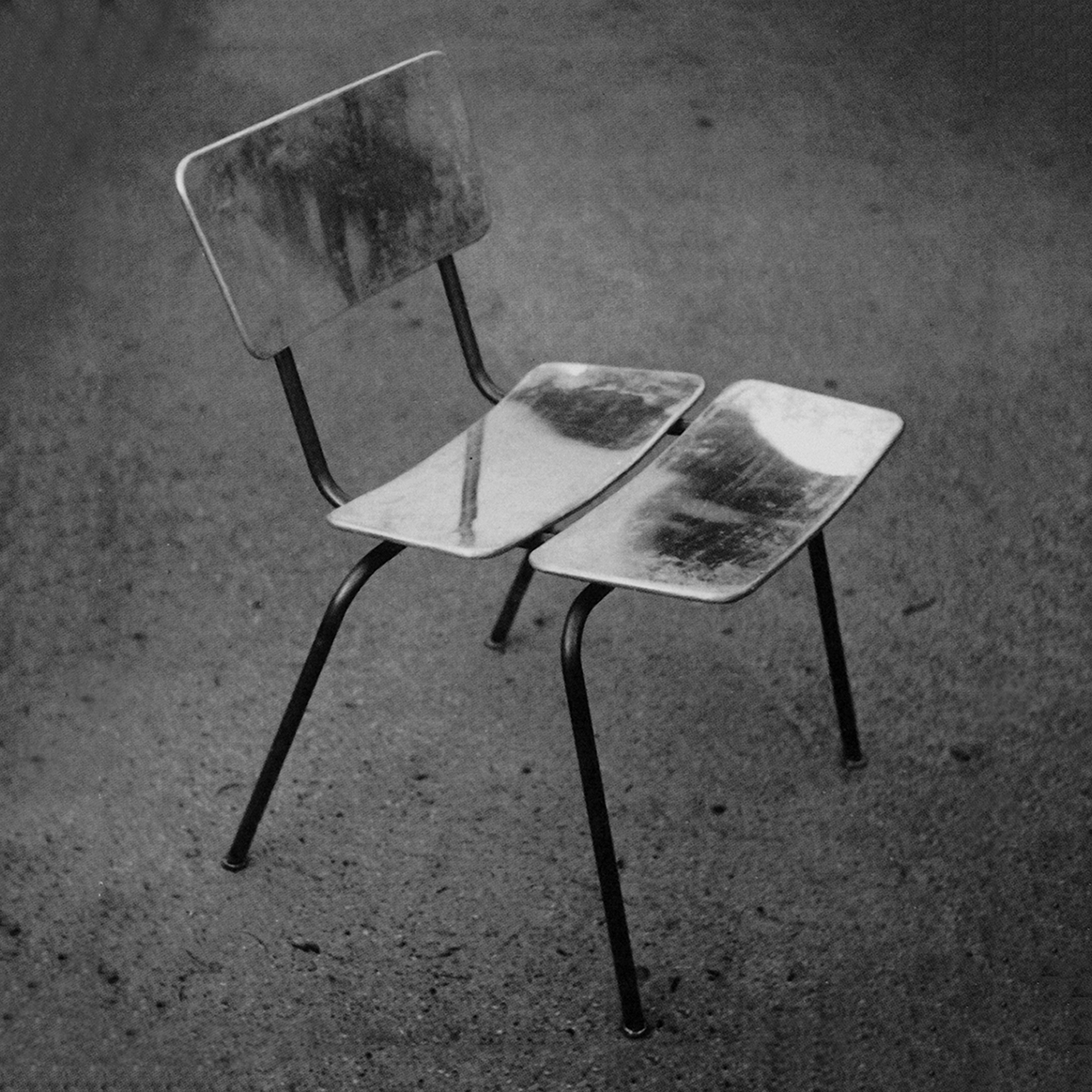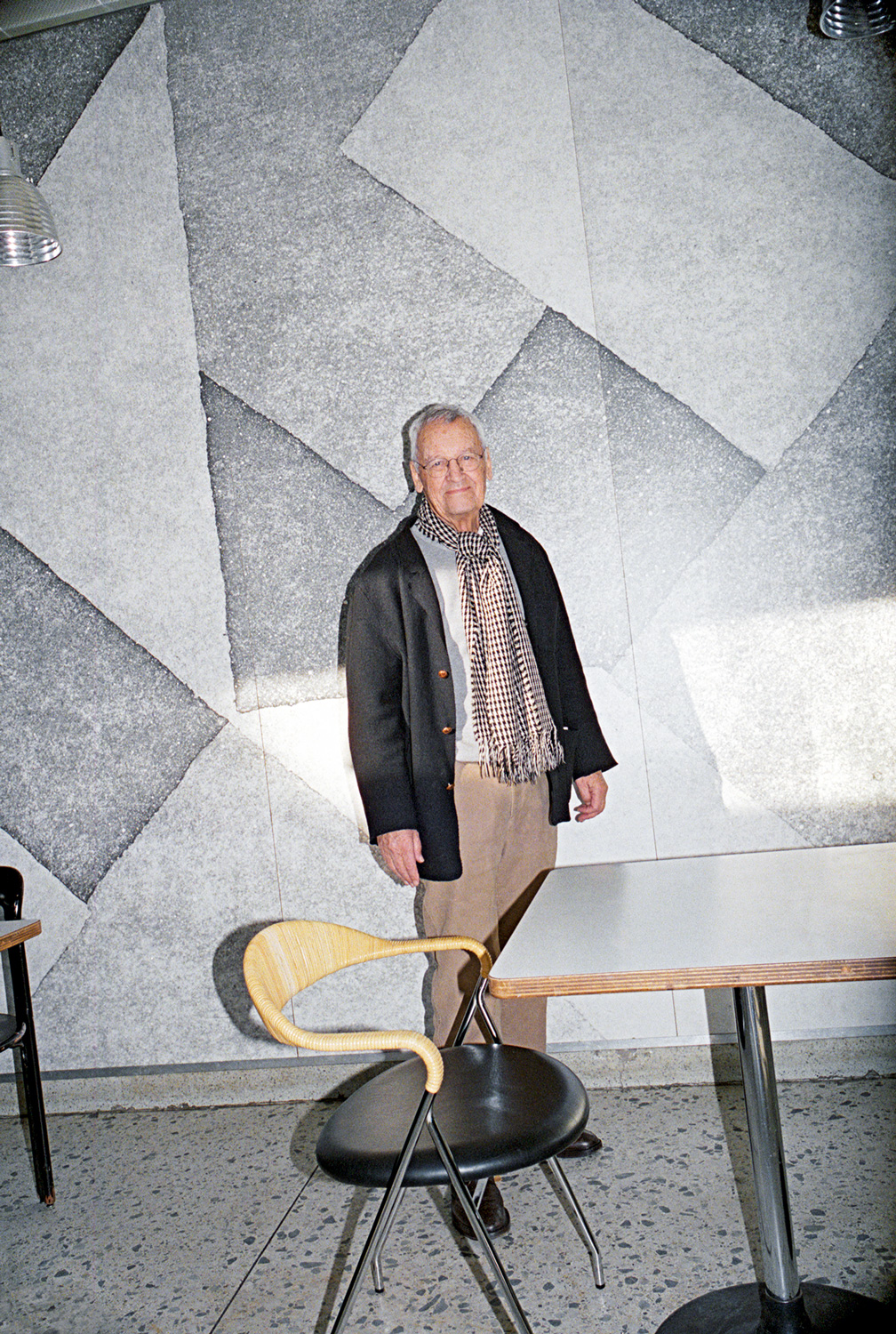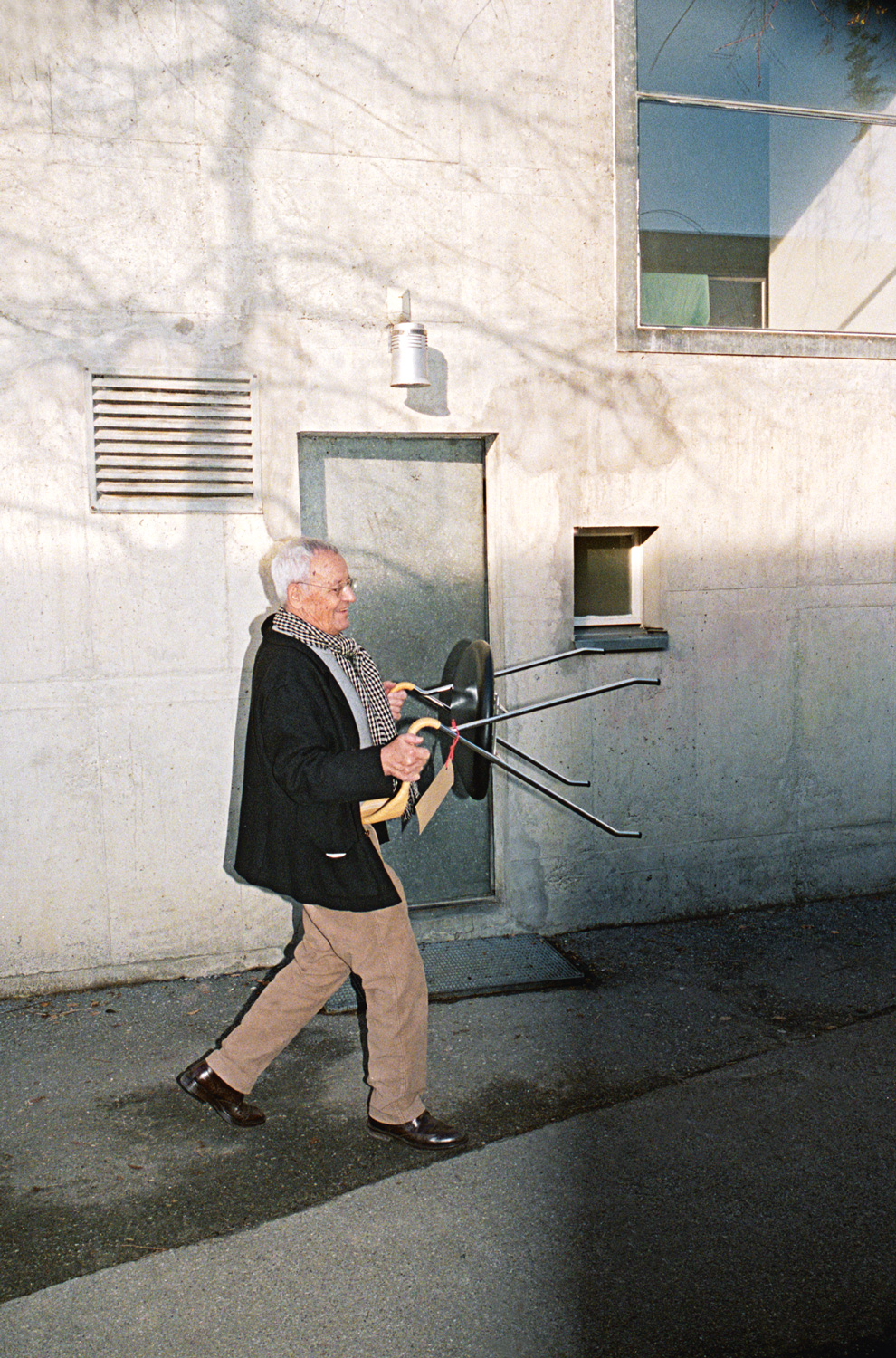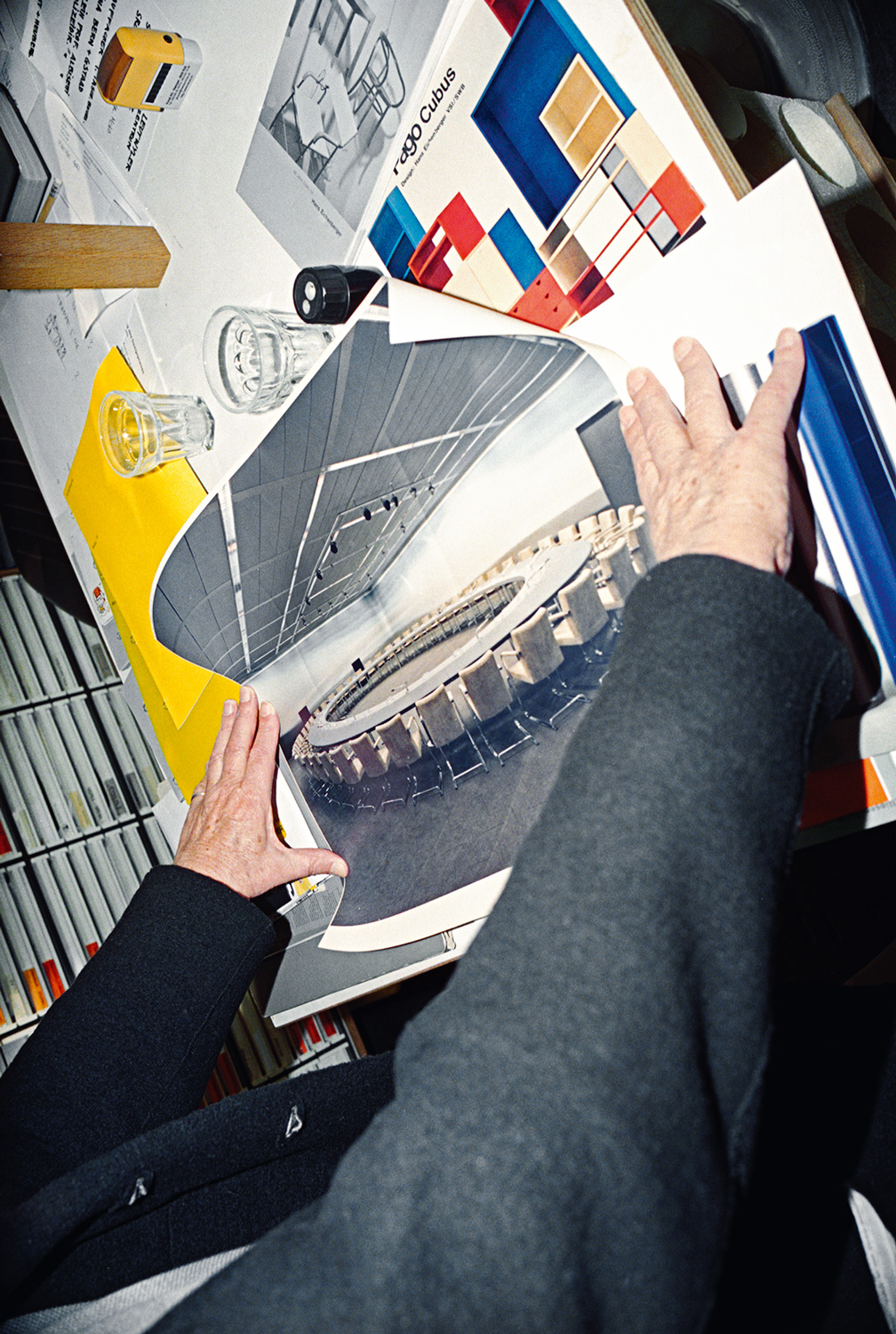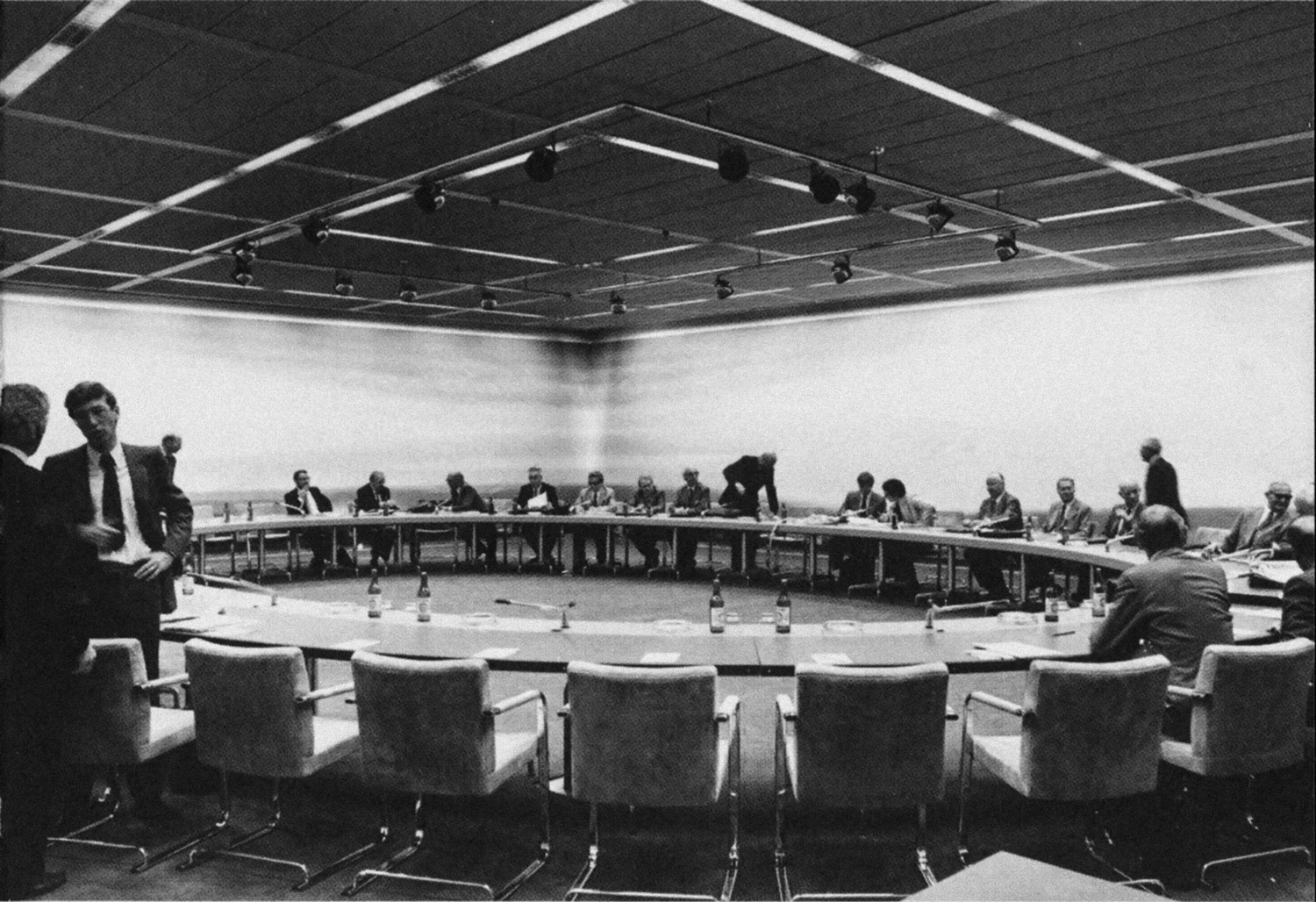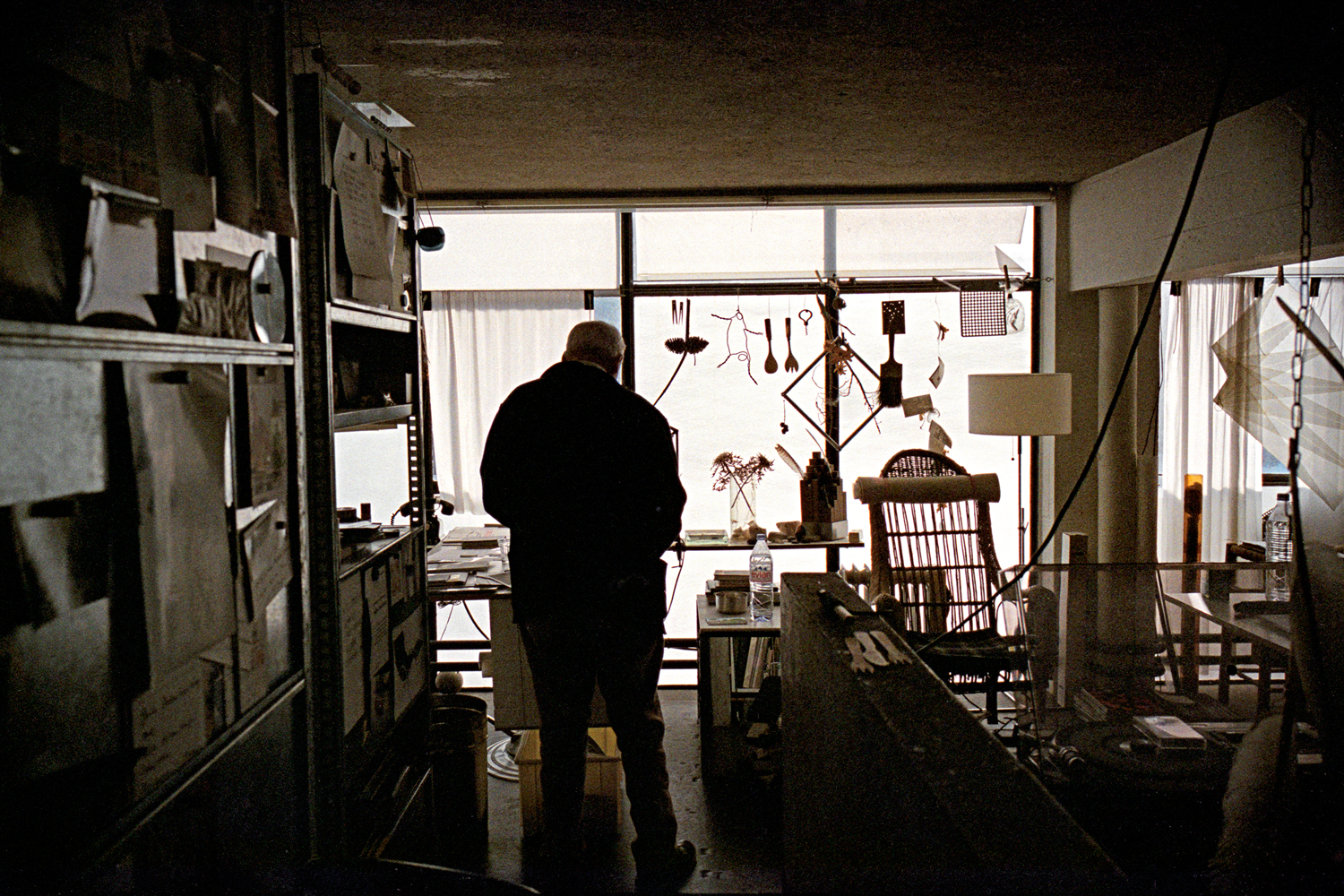Essay
At the age of ninety Hans Eichenberger has been awarded the “Grand Award for Design” of the Confederation. The designer is still very much at the top of his game and looks much younger than he is, which makes this well-deserved recognition of his life work not as belated as one might expect. Eichenberger has not only designed over fifty chairs and numerous pieces of furniture, many of which are still available today; as a committed interior designer, he has consistently sought to improve the spaces in which we live.
Eichenberger’s life work does not consist of an inventory of seating furniture; it is the product of a much larger mental and physical universe.
I have known Eichenberger for decades ; my approach to design and recognition of the challenges of this profession are much indebted to his influence. He often describes himself as a “nonacademic designer”, in allusion to his apprenticeship as a cabinet maker and his training at the local vocational school in Langnau. He can undoubtedly take pride in his achievements: the former cabinet maker enjoys the esteem of his design colleagues and loyal clients, who look back on many years of successful collaboration. After completing his apprenticeship which was, in his own words, “medieval to the extreme”, and internships as a draughtsman, Eichenberger went to Paris where he started working for the then well-known interior architect and designer Marcel Gascoin, author of the renowned maxim, “Il faut adapter le contenant au contenu.” [The container must be adapted to what it contains.] In Gascoin’s studio, Eichenberger primarily drafted furniture programs for the reconstruction of Le Havre and Rouen, which had been devastated by the war. He still expresses how much he is indebted to Gascoin for instilling in him the responsibility of creating designs that endure.
For BIGLA AG, one of Eichenberger’s first important customers, the inveterate woodworker designed two chairs using tubular steel. One was a garden chair, the wooden back of which he turned into the seat. That was more than a simple carpenter’s idea; the inspiration for the garden chair was the first in a long series of ingenious constructions created by this inventive designer. In scientific papers and design encyclopaedias, Eichenberger is often described as a master of reduction and omission.
The assumption that Eichenberger is a purist, who always seeks the simplest solution, overlooks the fact that he often tries to find the most artful solution.
The SAFFA chair, created in 1955, was and still is Eichenberger’s all-time favourite model. It is a pleasure to hear him explain how the two chrome-plated steel tubes are intertwined to form the legs and arms of the chair. In addition, he interprets the cane-wrapped back as an obvious and natural means of holding the two tubes together, demonstrating his passionate interest in combining intelligent technology with aesthetic excellence. Soon afterwards, he embarked on his first partnership with teo jakob in Bern, who had completely revamped his father’s traditional upholstery and wallpaper business when he took over in 1950. It is there that Eichenberger met Kurt Thut, who had renovated the building. Robert Haussmann was present when it was inaugurated and soon became part of the circle around teo.
Under the aegis of teo jakob, the trio implemented the idea of a shared furniture collection — and named it
“Swiss Design”.
Undoubtedly marketing avant la lettre, the name cleverly promoted sales of models by the three designers. Eichenberger once candidly admitted that it was so exciting for him to collaborate on the “Swiss Design” collection because working with chrome instead of wood made it easier for him to be modern — in spite of teo’s repeated admonishment : “Listen guys, don’t forget there’s wood, too.”
In the 1960s, Eichenberger began working for several leading Swiss furniture makers, among them Dietiker, Strässle, de Sede, Röthlisberger and WOGG. In those days, the firms, or rather their owners and managers, set great store by quality, excellence and innovation. With them, Eichenberger launched his career designing chairs and furniture as a kindred partner.
Hans Eichenberger’s official title reads “Interior architect and designer VSI and SWB”.* From the beginning, Eichenberger worked as an interior architect on commissions of his own alongside his long-term collaboration with Atelier 5, where he contributed to many of their buildings. In 1950 he pioneered the first paperback book store (for Stauffacher) in Bern and in the 1970s and 1980s, he designed the executive offices of the SRG (Swiss Broadcasting Corporation), the executive offices and meeting rooms of the National Bank and the Ciolina fashion house in Bern and Gstaad.
Eichenberger’s talent as a designer is paired with extraordinary manual skills, reinforcing the habitually high demands he made on the material quality of his interior designs. Nonetheless, his competence and skills never went to his head; he was never overbearing and only took independent action in emergencies. His clients, like Atelier 5, underscore his readiness to sit down at the conference table to work out problems and analyse projects after which he would go home and come up with something unexpected after all. The fact that the partnership lasted 35 years speaks for itself and the café bar at the Kunstmuseum Bern has not changed since it was built and designed by Eichenberger in 1983.
Hans Eichenberger is like most of his work — he doesn’t age.
Recently, in a conversation about the floor lamp that he created for his wife Maria’s birthday in 1954, I realised that his mind had followed suit. When asked why, despite the success of that floor lamp, he did not continue designing lamps, he thought for a moment and said, “It’s very simple : I’m not so good at something if I can’t see it — and that applies to electricity.” And because “Jöggu” is always very precise and does not speak in clichés, his enigmatic explanation gave me food for thought. But now I know: that was the young man who is still capable of explaining something complicated that is on his mind in a very simple way. I wish my old friend a continuing, enjoyable old age in good health and with many exciting experiences.
Christian Jaquet
* VSI (Vereinigung Schweizer Innenarchitektinnen und -architekten)
Swiss Association of Interior Architects
SWB (Schweizerischer Werkbund)
Swiss Werkbund, Association of Designers, est. 1915


